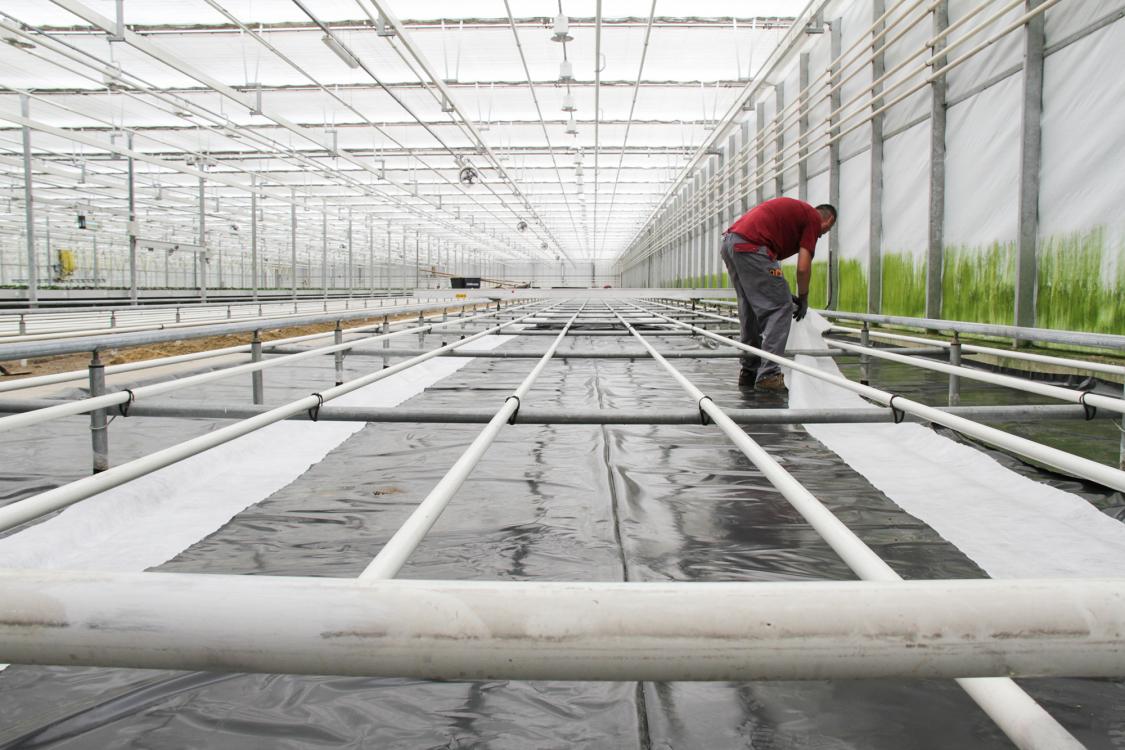Working towards more sustainable water use: a complex challenge
You are here

Working towards more sustainable water use: a complex challenge
At Microflor, we are always looking for new ways to reduce our ecological footprint. Reducing drain water and maximising its reuse is the next hurdle in the process. Our research phase is still ongoing, but one thing is clear: achieving more sustainable water management requires a combination of efforts.
A drain water collection system has been in place for some time now to catch drain water from our tissue culture processes. This coming summer, we will be adding a system for our acclimatisation rooms. A cultivation floor by Dutch company ErfGoed will be installed. This floor – called ErfGoedVloer – consists of a layer of porous stone that transports excess water to a drain system. The high-quality membrane prevents the drain water from reaching the subsoil.
The next step is to maximise the recovery of drain water. However, Phalaenopsis plants are not the easiest to use with this system: sometimes, only 20% of the irrigation volume is absorbed by the plants. Our search for a sustainable solution for this drain water started about twelve months ago. To achieve our goal, we will need to improve our efforts across several production processes:
1. Reducing drain water volume
The less drain water we produce, the less there is to recover. Apart from our growing processes, there are several other elements that impact the drain water volume, such as the irrigation system but also the pots and trays we use, and the substrate volume. The percentage of drain water produced in our plantlet section is more than 50% less than the percentage produced in the area where we grow plants in five-inch pots.
2. Treating drain water
All drain water must be treated before it can be reused or discharged. There are water purification systems out there that use reed fields, selective membranes or technologies such as reverse osmosis. Each of these systems has its own advantages and disadvantages. A reed field, for instance, requires a lot of space and focuses on nitrogen absorption. Reverse osmosis leaves a concentrated solution that needs to meet specific requirements before the water can be reused or discharged.
3. Using different plant protection agents and disinfectants
With any water recovery system, it is important to use plant protection agents and water disinfectants that are less concentrated or persistent. The less fibrous material is left in the excess irrigation water, the easier — and therefore cheaper – it is to get the water purified enough for reuse or discharge.
4. Selecting pure fertilisers
The same goes for fertilisers: the purer the product to begin with, the easier it will be to purify the excess irrigation water. A properly set up water treatment system requires insight into the sensitivity of various plants to fertilisers throughout the different stages of growth. However, finding out this information would be an immense task for horticulturists to complete on their own. This type of research is therefore undertaken by research institutes and institutes for practical research and training.
Reducing drain water volume, maximising the reduction of fibrous materials and residue in fertilisers, plant protection agents and disinfectants, and developing a custom water purification system are all elements that contribute to more sustainable water management. At the same time, we have to continually monitor that all our plant growing needs are met. Our goal is to initialise our water recovery system by the end of this year to significantly reduce the ecological footprint of our acclimatisation rooms.
Questions about water reuse at Microflor? Contact us today.